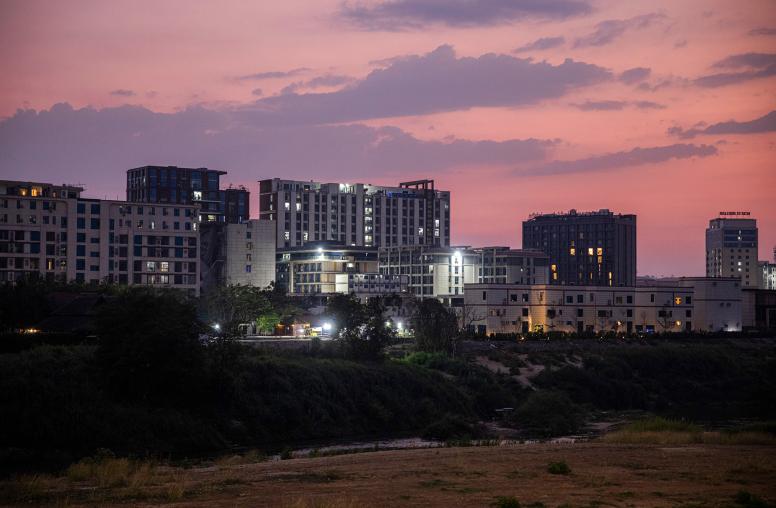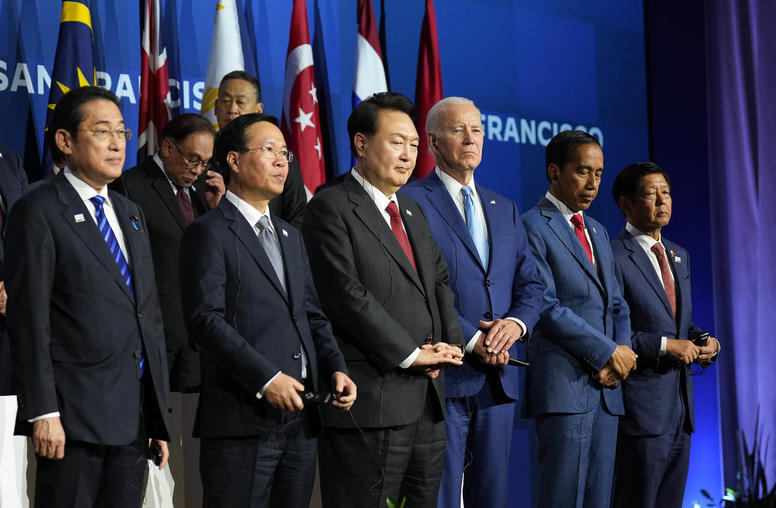Thailand: Could One of Asia’s Deadliest Conflicts Be Coming to an End?
After decades of conflict, the government and southern rebels take tentative steps toward peace.
Thailand’s southernmost region is home to one of Asia’s longest-running armed conflicts. A separatist movement that emerged in the 1960s sought to carve out the Muslim-majority region as an independent state. Levels of violence have oscillated over the course of the conflict, with the most recent insurgency arising in the early 2000s. Despite decades of protracted armed conflict, there is recent cause for optimism.

A growing number of officials are talking about the need to move beyond conflict management to conflict transformation in order to focus on the root causes of the insurgency. Moreover, government and rebel peace negotiators as well as the Malaysian facilitators of the negotiations are exploring ways to move beyond confidence-building measures and take up more concrete, substantive issues.
The Roots of the Conflict
The conflict is deeply rooted in historical tensions and mistrust. This Malay-speaking region, known as Patani, came under Siam’s control in 1785, following its defeat. Since the beginning of the 20th century, Buddhist-majority Thailand (then Siam) has aggressively pursued a policy of assimilation, which Malays reject as an infringement on their cultural and religious identity. Many in this community hold that the region belongs to the Malay people and that the community has a moral obligation to liberate it from invading Siamese/Thai forces.
As international support for the insurgency, particularly from Arab countries, waned in the post-Cold War era, violence in the region fell. In the late 1980s to early 1990s, combatants put down their weapons and returned to their villages, while the movement’s leadership remained abroad, taking up asylum and citizenship in foreign countries. Thai policymakers wrongly assumed that the absence of violence meant peace had been attained. But the Malay cultural-historical narrative of liberation continued to persist in the region.
A new generation of fighters surfaced in mid-2001 with regular attacks on Thai security outposts. The insurgency shifted into high gear in January 2004 after dozens of combatants raided an army base and made off with more than 350 weapons. The incident prompted official acknowledgement from Bangkok of renewed insurgency in the region as Thai officials could no longer deny the political underpinning of the attacks. The government responded by sealing the border, placing several districts under curfew and deploying a large number of soldiers to the region. Since then, more than 7,000 people have died from insurgency-related violence.
Thailand’s Response to the Insurgency
Thailand’s counterinsurgency operation has involved a two-pronged approach of development and security. Both have failed to win hearts and minds as neither addresses the root causes of the insurgency. The conflict is essentially about rejecting Thailand’s policy of assimilation and the Patani Malays’ quest for independence. Militants on the ground continue to enjoy support from the Malay Muslim residents, particularly those living in remote villages. Over the years, successive Thai governments have quietly approached neighboring countries and international nongovernmental organizations (INGOs) to mediate the conflict. None successfully generated meaningful traction, as talks were mainly held with exiled former armed separatist leaders who no longer controlled the combatants on the ground.
As for the Barisan Revolusi Nasional (BRN), the armed group that controls virtually all of the combatants on the ground today, independence continues to be a sacred value and nonnegotiable goal. For years, the atmosphere was not conducive to peace, as neither side was willing to make concessions. As a country that has never been colonized, Thailand never seriously considered ceding territory over which it claims sovereignty. But in January 2020, nearly two decades after the arms heist that kicked off the current wave of the insurgency, the BRN and the Thai government decided to come to the table for talks facilitated by Malaysia. The two sides held two face-to-face meetings, focusing on technical issues, and exploring confidence-building measures. Then COVID-19 hit the region in March 2020 forcing the discussion online.
Rebels’ Leap of Faith
The peace initiative that was launched in January 2020 rests on a shaky foundation. The BRN’s powerful military wing is not convinced that the atmosphere is conducive for a formal negotiation. Moreover, it is also concerned that the movement will abandon its moral obligation to liberate the region. In late 2019, talk of a split in the BRN was rampant until a group of young political activists from The Patani, a political action group seeking self-determination in the region, convinced the BRN military wing to reconsider. Although critical of this latest peace initiative, the president of The Patani, Artef Sohko, feared that division of the movement would cause violence to escalate and risk greater harm to civilians. Artef urged the BRN’s leaders, and particularly the military wing, to take the moral high ground and explore new ideas to advance their cause, particularly through nonmilitary means. These suggestions led to two major announcements.
On February 19, 2020, representatives of the political and military councils of the BRN signed the “Deed of Commitment for the Protection of Children from the Effects of Armed Conflict” with Geneva Call, an INGO that works with armed groups around the world on rules of engagement and other humanitarian issues. In March 2020, the region became a hot spot of the COVID-19 pandemic when hundreds of people became infected after a group of Muslim missionaries returned from Malaysia and Indonesia with the disease. In response to a request from United Nations Secretary-General António Guterres for a global cease-fire during the pandemic, the BRN in April 2020 announced a unilateral cease-fire to allow medical personnel and aid workers full access to the area to carry out humanitarian efforts to combat the pandemic.
While the BRN received some quiet praise from the international community for its overtures, the Thai army was not amused. Rather, the Thai army responded with serious force, sending out helicopters, drones and long-range reconnaissance patrols. It was a stern reminder to the BRN that nothing comes easily in this historically contested region. Moreover, the peace initiatives lacked the support of the then army chief Gen. Apirat Kongsompong who viewed the insurgents as nothing more than criminals.
Prospects for Peace
Though history suggests one should not bet on peace, there are reasons for optimism. Apirat retired last October, ushering in new leadership that appears to be more amenable to the peace negotiations. Additionally, the BRN’s military wing is exploring “nonmilitary means” to advance its cause. That does not mean the peace process is secure. The BRN’s military wing has yet to be convinced that there is much to be gained from the peace process, but it is willing to give the negotiators time to prove them wrong.
Though the COVID-19 pandemic had the potential to derail peace efforts, negotiators from both parties were able to maintain momentum by adapting to an online forum. The platform has proven to be somewhat awkward for the BRN negotiators who would rather discuss sensitive issues, like the cease-fire during the recent Ramadan holy month, in a face-to-face setting. Artef warned that one should not expect too much from the BRN negotiators as they do not have significant influence over the combatants. They risk making themselves irrelevant if they do anything that antagonizes the military wing, he said.
BRN and Thai negotiators are currently at a crossroads, trying to transition from confidence-building measures to a forum in which more substantial issues can be discussed. The pandemic response presents an opportunity for cooperation, as both sides recognize the need to encourage residents, particularly the Malays, to sign up for vaccinations. Separately, a growing number of senior Thai government officials in and around the policy arena are starting to talk about the need to embrace conflict transformation, a peacebuilding theory that goes beyond conflict resolution and conflict management to focus on the underlying conditions that give rise to conflict in the first place.
Whether the current or future governments in Thailand will have the political will to explicitly identify the social structures and dynamics causing the conflict and be courageous enough to reshape them remains to be seen. But the fact that the two opposing sides are finally talking to one another, even on a shaky foundation, suggests that there is hope for peacebuilding initiatives in this restive region after all.
Don Pathan is a Thailand-based security analyst.



